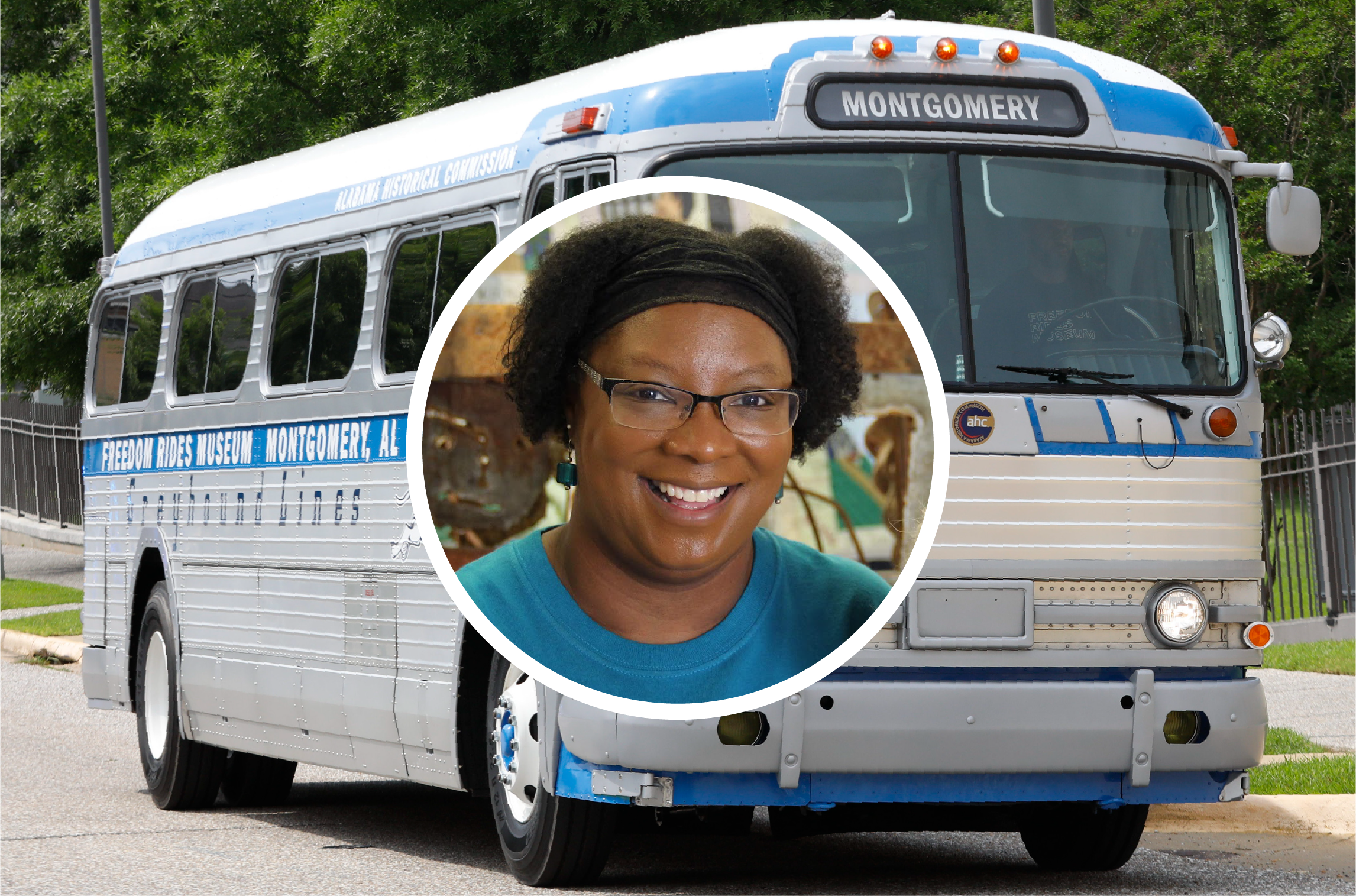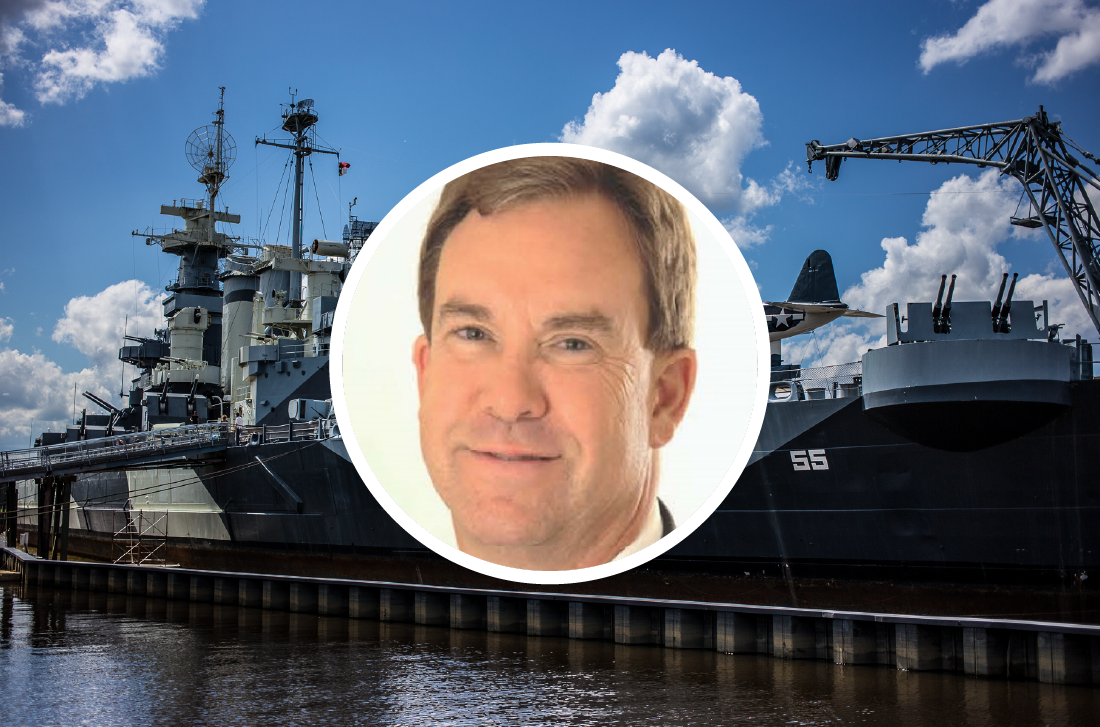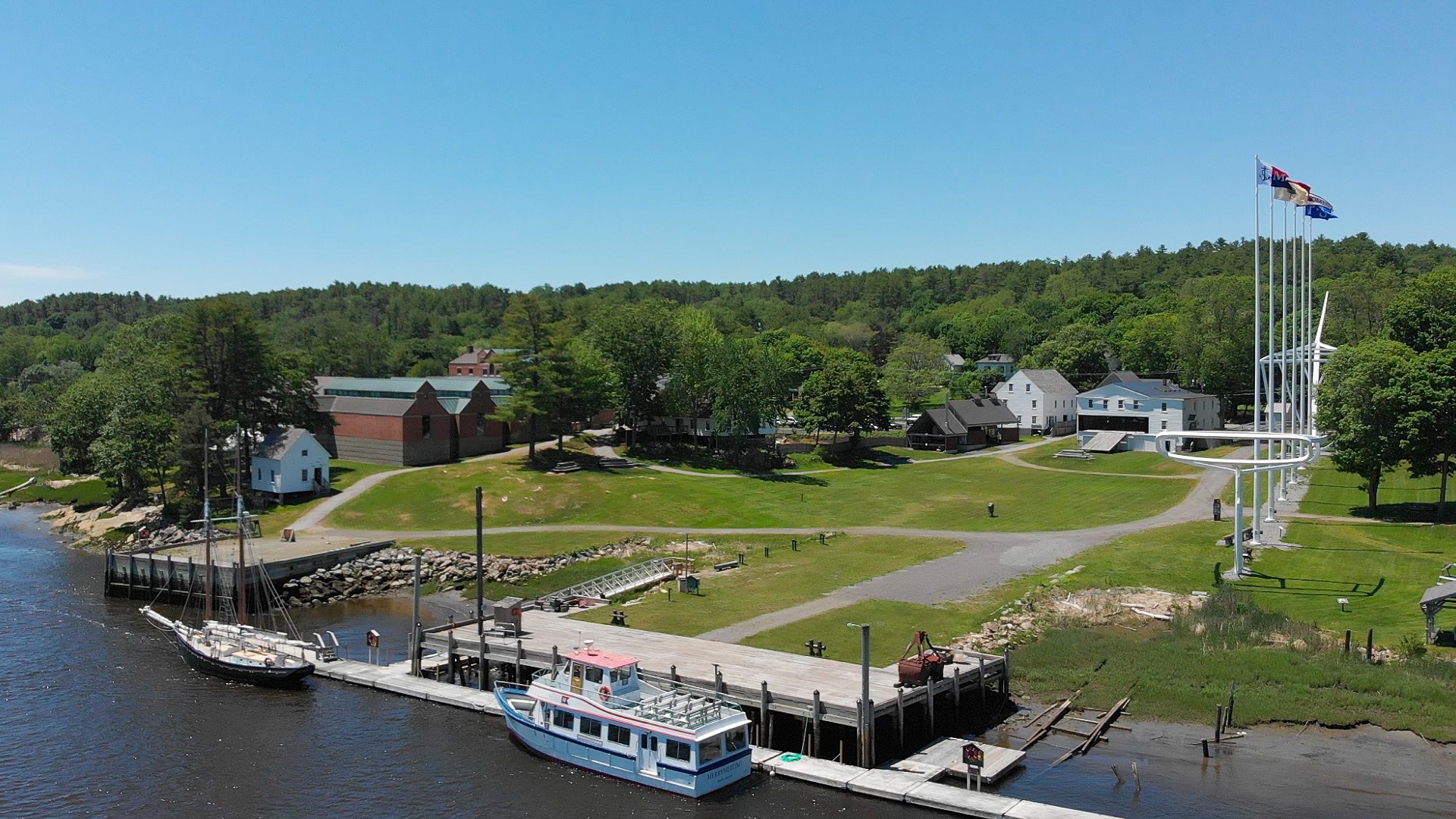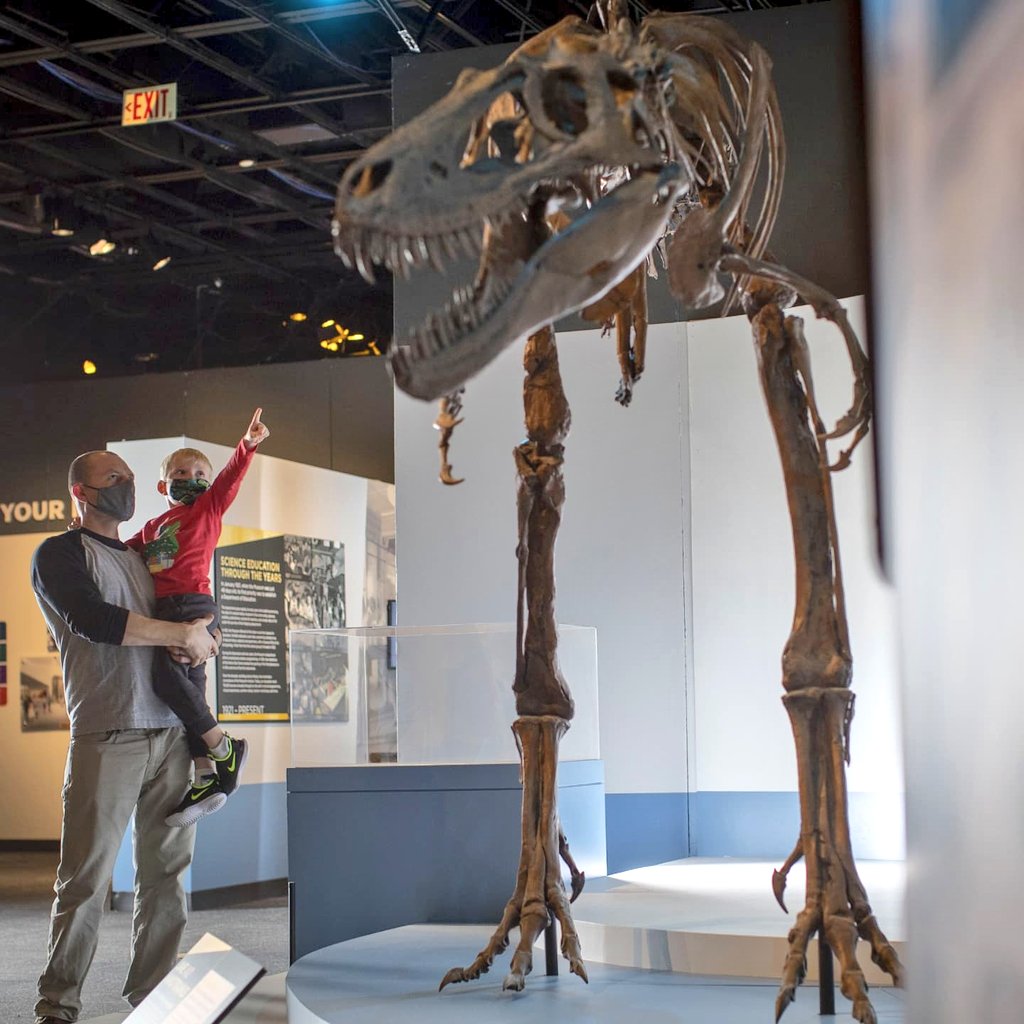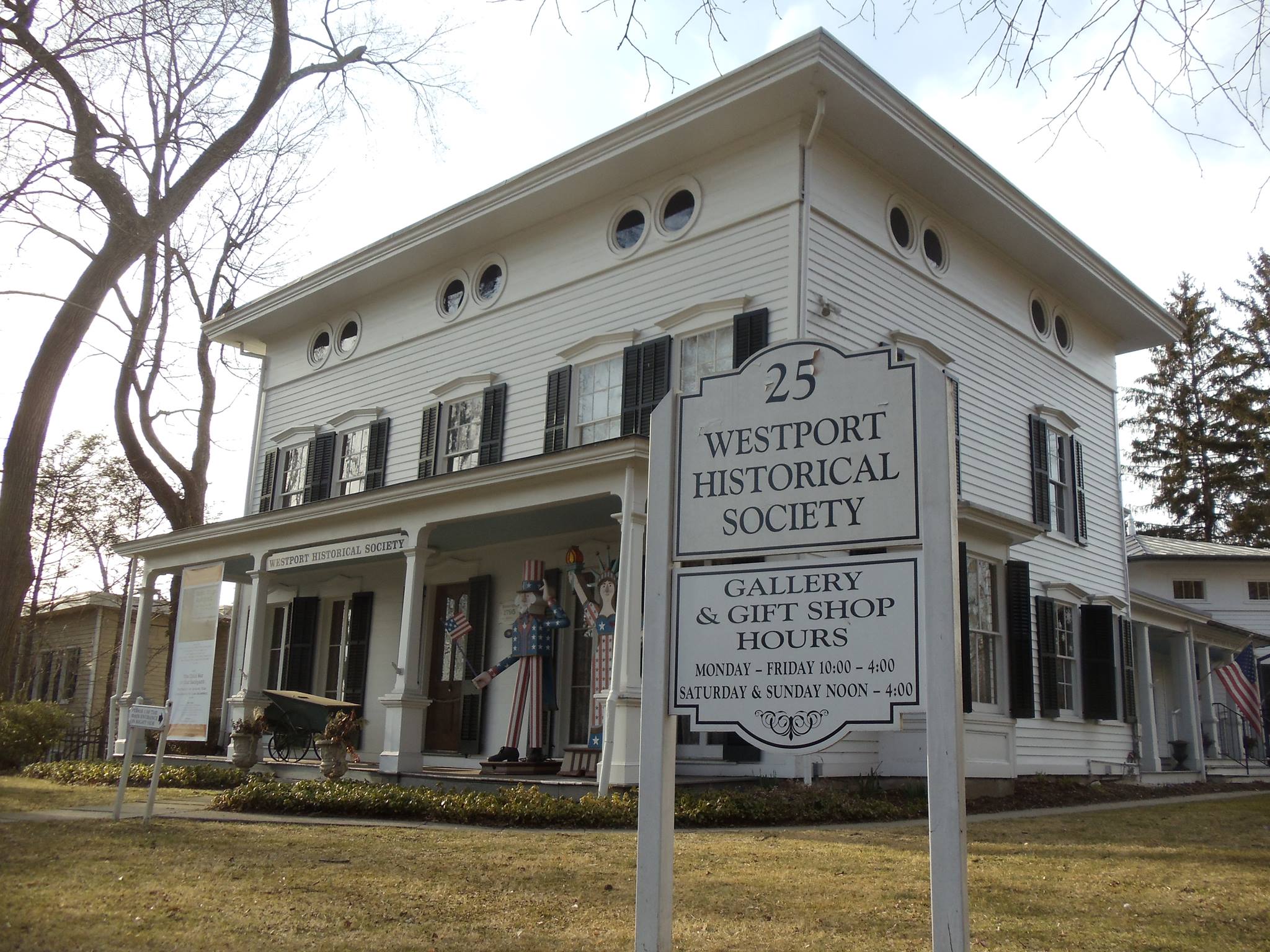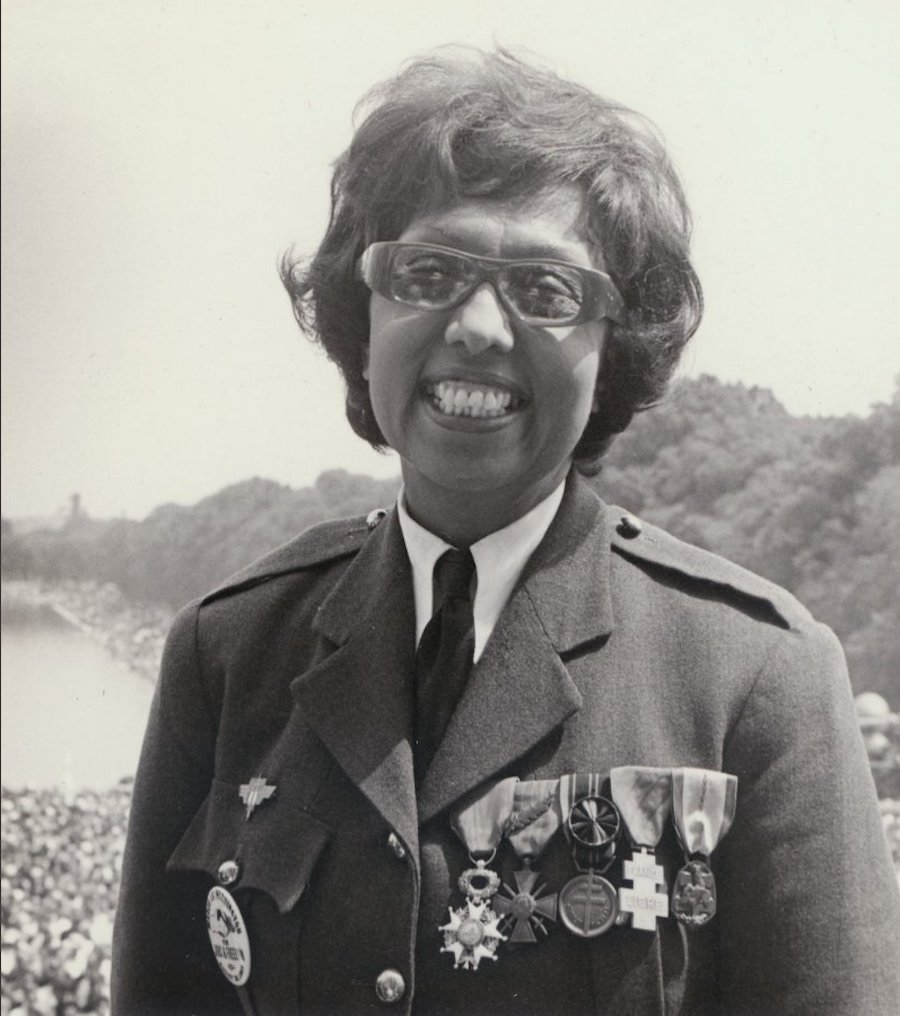Kimberly Floyd, Vance Birthplace State Historic Site
Kimberly Floyd currently serves as the Site Manager at the Vance Birthplace State Historic Site. She has worked in the field of public history for fourteen years. She completed her master’s in public history from North Carolina State University and has worked at museums and historic sites including Mordecai Historic Park, Historic Stagville, and the City of Raleigh Museum. Most recently, Kimberly also serves as the co-founder and Executive Director for the North Carolina Craft Beverage Museum, which plans to open in Asheville.

How have things been going for you and your staff since the beginning of quarantine?
We have three full-time staff at the Vance Birthplace; a lot of our State Historic Sites have a low number of people. At our site, we’re rotating schedules and I think everyone’s adjusted to the new normal for right now. As far as how we’re setting up the space and how we’re handling our digital content, we pushed it really hard in the beginning so that did take some checking in and saying, “We’re all really burned out.”
I think we’ve come over that hump and are better streamlined at this point of how we’re rotating schedules and just saying things out loud like, “I literally can’t get the work done, unless I have some time at home with using video editing content that’s on my personal computer.” We’ve adjusted at this point.
Can you tell us about the things that you were doing to be able to continue working and connecting with the public while the site was closed because of quarantine?
Even when it first started, I don’t think any of us realized it was going to last as long as it did. The week before North Carolina went on lockdown, I was seeing that something was coming and I was texting with my assistant site manager on the weekend. I remember sending her messages saying, “Something’s coming, and I wouldn’t be surprised if we get closed for a little while. I have all these ideas about how we can engage with people utilizing our social media.”
So we got on the phone to brainstorm ideas and it was literally just a Word document of, “What are the things we are currently doing at the site that we can adapt to online and bring now?” As soon as we shut down, we started programming online and I sent an email to my boss saying, ” These are all ideas that I had.” And she said, “Can I share it with the division?”
It went out to all the State Historic Sites across the state, and from there, the director of our division and others in the administration in Raleigh came together and created a Digital Engagement Committee. Now it’s a full committee with representation all across the state, but initially I was really serving as the liaison with historic sites, with people on the ground level. They were like, “I don’t know how to do this or that,” or “How are you editing your video?”
We had a good following on Facebook and we had just created an Instagram earlier in the year, so we decided that we were going to use those platforms. We already had a YouTube account created, so we were going to start putting stuff up there. But it was a learning process.
People connect with people. Any time we post a video that has me or our assistant site manager in it, we get more likes. We ended up noticing little things, like that if you put the YouTube link in the post on Facebook, people don’t see it as easily. We were putting out videos every single week, on top of just the normal administrative stuff and it was just too much honestly. That’s really where the burnout came from.
I had an idea for this series. So we started “Quarantined Historians Drinking Coffee” on YouTube and connected with other people in the field and talked about interpretation. While it was fun, the editing of one of those videos alone takes me, I don’t know, six hours? That’s a lot of time during the week, when I’m also trying to figure out what’s happening with COVID, how we’re going to reopen, paying the bills. We’ve started transitioning into adapting it to actually make it work for virtual programs instead of exactly what was happening at the site.
Has did reopening go?
Because we’re a State Historic Site, we’re following all of the governor’s orders. We were shut down in March, but people use our site as a park. They come out, they picnic, they walk their dogs. So I really haven’t seen a drop in numbers. While the Visitor Center wasn’t open and we weren’t giving tours and school programs, the grounds were open so people were still coming.
When we moved into Phase 2.5 is when museums technically could open. We had been working on that process within the division for quite some time. As soon as they shut us down, we started ordering cleaning supplies, masks, all of the things. Honestly, our division was very responsive and quick in response to what our needs were. All of our sites are set up so differently with our visitor centers, every single one had to be taken in a different way. I put together a plan of what I thought was best as far as traffic flow, which doors we would unlock, which doors we would lock, the process for selling gift shop items.
We really haven’t been open to the public that long. We’re starting to take people back into the Visitor’s Center. We’re rotating schedules because our office is so small. I literally can’t get out of my office without walking right by my assistant site manager, so we don’t spend time at the site together. It’s made it really difficult to stay on top of some of the digital programming, but we are back open now.
What sort of things are you doing at the site to ensure health and safety for visitors?
Since we are a State Historic Site, we have signage that we received through our division and through the State of North Carolina with all of the standard things (like the three W’s, requiring a mask). There are some things that had to be customized for each site, for example, arrows showing people where they’re going, saying which doors are locked.
If staff are in the Visitor’s Center at the same time, then we’re both wearing a mask and not in the same room. It’s going to get harder in the winter time, but we’ve rearranged our entire Visitor’s Center. We have a classroom space where we would normally host school programs that’s become a storage space for all of our cleaning supplies, and also where I’ve set up a break room for our maintenance employee.
We have QR codes with our self-guided map, and we created an audio tour back in June for Juneteenth. So people can scan that and get a map and an audio tour. Our emergency capacity in the Visitor’s Center right now is six people. It does requires the staff to say, “Hey, we have six people in the exhibit right now. I’m going to need you the wait outside, and as soon as someone leaves, you can come in.”

Which of the changes this year do you see becoming more of a permanent thing? Do you think that that the emphasis on digital content will continue post-quarantine?
I do think it’s something that will continue. For our smaller sites like Vance and other places where there’s just not a lot of staff, it’s probably not going to be quite at the same level. But I think there will be elements of it moving forward, at least at our site.
For example, we did an embroidery workshop back in July and it was extremely successful. We’ve done something like that before at this site and had maybe ten people and when we did it online, we had thirty people and they were spread all over. We had people in Tennessee, Georgia, South Carolina, Pennsylvania, eastern North Carolina. So one thing that will keep us doing it is making the site more accessible. We’re doing our holiday program virtually this year. I will probably continue that next year, even if we do it in person as well, maybe have one night that’s digital. It will kind of be a mixture moving forward.
One thing that I think is going to be an ongoing discussion moving forward is how this affects school programs. We have a school group in Durham who are going to do our program in February. A school in Durham could go to Stagville State Historic Site and now they’re coming to us instead. We’ll always keep our digital education school programs now because we can do it in person, but then if someone in California wants to do it, they can.
When you start talking about numbers and how we acquire our budgets from the General Assembly, a lot of it’s based on our visitation. How many staff we have is based on our visitation. The digital content is opening it up in a way and might complicate that.

Shifting gears, how has the current social justice movement impacted Vance Birthplace, especially as a site where enslaved people lived?
I’ve worked at multiple plantation sites, one in Raleigh, one in Durham and now one in the mountains of North Carolina. When I came to the Vance Birthplace in 2016, I found the site extremely frustrating. Generally people thought that we were talking about slavery too much and didn’t come to the site or they thought we weren’t talking about slavery at all and didn’t come. There was quite a bit of pushback on the idea that slavery even existed in the mountains of North Carolina.
At other plantations sites that I had worked at, people already accepted the idea that slavery and plantations were existent in the Piedmont. But people see “Gone with the Wind” and expect these long, sprawling plantations and our property doesn’t look like that. That has been an ongoing interpretive mission at the site: transitioning more into interpreting an early mountain plantation and helping people understand that slavery did exist in western North Carolina. The Vance Birthplace was a little behind other sites when it comes to telling a full, broad, inclusive narrative.
With the current protests and cultural climate and what’s happening right now with the social justice movements, we are getting a response like we have never seen before. I would say it’s actually been positive for us at the site. In the past, people have completely written off the Vance Birthplace. They don’t come to it; they don’t talk to us. Whereas now, people are calling us and asking us questions. We were getting constant emails and phone calls from people in the community, especially when it peaked in June, saying, “Did Vance actually own slaves? What did Vance say? Was he racist? Was he a white supremacist? What can you tell me?”
One of my favorite phone calls was someone who called me and said, “Hey, I got into a fight with my dad over the dinner table last night, and he said that Vance wasn’t racist because he didn’t own any enslaved people. Can you help me?” I said, “Well, let me get this straight. You’re asking me to help you argue with your dad about Vance? Yeah, I can help you with that.” So, I got his email and sent him the 1860s slave schedule, showing that Vance did in fact own slaves. Then I said, “Maybe the focus isn’t the six enslaved people, but his speeches where he would go on and say all of these things.” I would say the social justice movements have opened up a channel of conversation that hasn’t been there in the past.
Our division director, Michelle Lanier, has been very supportive of that conversation. As part of the Digital Engagement Committee, I was in charge with one of my colleagues in the East region on a new initiative that State Historic Sites just started and launched this month, called True Inclusion. It’s about saying the names of African-Americans associated with all of our state historic sites. That’s something that many of us across the state have been doing for quite some time. But our True Inclusion initiative is bringing it together in a way that hasn’t been brought together state-wide.
Are you engaging the community in any of those efforts in terms of how you’re responding to the current climate?
There is a lot of involvement with the community; there’s strong partnerships between the African-American Heritage Commission and the Division of State Historic Sites. We have a lot of resources within our division to connect with the community in that way. But I would say a lot of the community connection is happening on the site level, because we are also spread out. There may be stuff happening on a division-wide level that I just can’t speak to because I’m not in Raleigh. But my role as a site manager is to engage with the local community. So I’m the one who is going to reach out and talk to the community, understand, try and relay that back to my administration in Raleigh and go from there.
I’m the one who, for example, when the protests were happening in June, was sitting in, listening to the City Council meeting when people are calling in and discussing the Vance Monument. I need to make sure I understand what people are saying and how they’re responding to it. Even though we don’t manage the Vance Monument, it’s still connected to our site because of the history.

What do you think the continuing role of museums is? Do you think we’re in a radical reimagining or are the changes that have been happening just ramping up?
There are a lot of sites and museums out there, people who have been doing good work for probably the last ten years. But I also think there’s a long way to go. As public historians, we’re always looking at the past and it can be easy to become complacent.
I’m constantly changing our self-guided map and little things like verbiage. For example, I used to say, “the Vance Family Home.” Then I thought, “Why are we saying ‘a slave dwelling’ and then the ‘Vance Family Home’?” Something about “family” really bothers me because I’m like, “The enslaved people had families too.” We need to think about the language that we’re using.
When I was working at Mordecai, ten to fifteen years ago, we were having the conversation about the terms “slave” versus “enslaved.” Now we use “enslaved people”, but I was writing a panel the other day and it was talking about colonists and spreading adventures out west into the mountains in North Carolina. And I’m like, “Huh, it’s not really an adventure out west. They’re stealing Cherokee land.”
I’ve been in the field for fifteen years, interpreting slavery for a long time, and I hope that my interpretation now is better than it was last year and it’s going to be better next year. I hope that is the shift, that people start questioning more and start to really think about the narratives that we’re telling.
How do you deal with interpreting in a way that feels correct even if some of your visitors aren’t going to like it?
What’s important to remember is that my job isn’t to make people feel comfortable. Museums are not meant to be neutral and that is something that has changed drastically in the field.
There are people who don’t like that I call the Vance Birthplace a plantation. Yes, I don’t want to alienate people who may not agree with that, but I’m also not going to give historically inaccurate information. And at the end of the day, David Vance Sr. called it a plantation and so I call it a plantation. The words that we use matter.
What I often say to our staff when we’re training is, “It is important for everyone to feel heard.” If someone doesn’t like what I’m saying on a tour, as long as I hear them out and have an open conversation, then I feel good about it. A lot of the families that live in the area have lived here for generations. They love the Vance Birthplace. If I just start attacking Zebulon Vance, that’s going to upset them. Instead, I focus on the enslaved people because that’s who primarily lived there and did the work.
We do our Christmas program, An Appalachian Christmas Carol, and we follow the story line of Dickens’ “A Christmas Carol.” We set Vance as Scrooge, and then he is visited by the ghosts of Christmas past, present, future. You go through this tour learning about Venus, who was an enslaved woman on the property. It is not a happy program. People cry all the time on this tour. We’ve had people leave in the middle of it.
Last year, I had a guy leave probably about ten minutes in and he came into the Visitor’s Center very upset. We went back into my office and I was trying to understand what he was so upset about. He was explaining about how much he loved Zebulon Vance and how much that site meant to him. I said, “This tour isn’t about Zebulon Vance.” At which point he cried in my office for ten minutes and I said, “I understand it’s hard when you have a personal family connection and you grew up here. If you need a minute to cry in my office, that’s fine, but this program is about Venus.”
Every single person is different who comes to the site, so it’s important to meet them where they are. In the same way that I am questioning, I want them to question. I might not change someone’s complete understanding of history, but the idea is that I can make them think, “Well, maybe it’s a little bit different than how I learned it when I was eight.”




